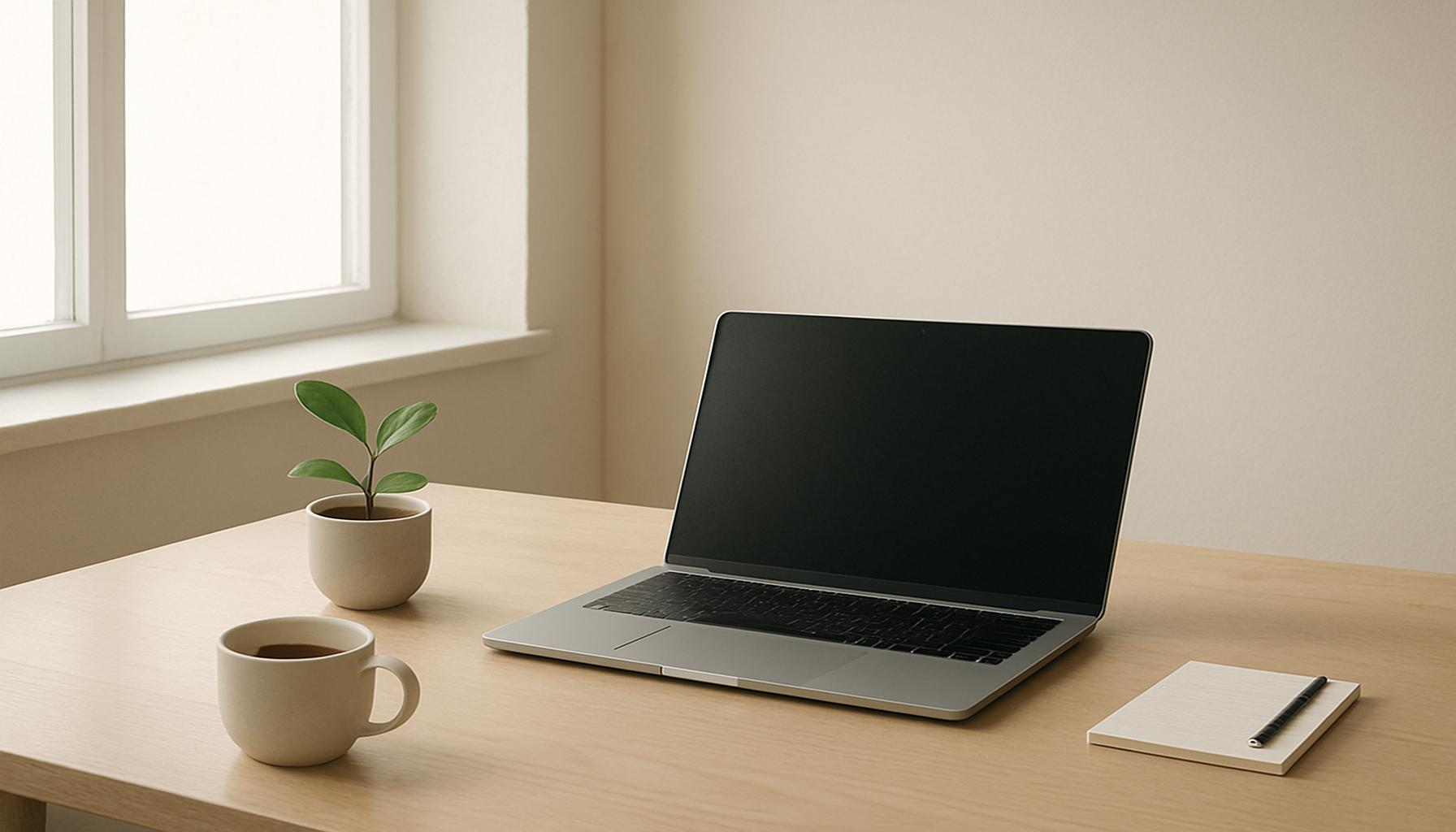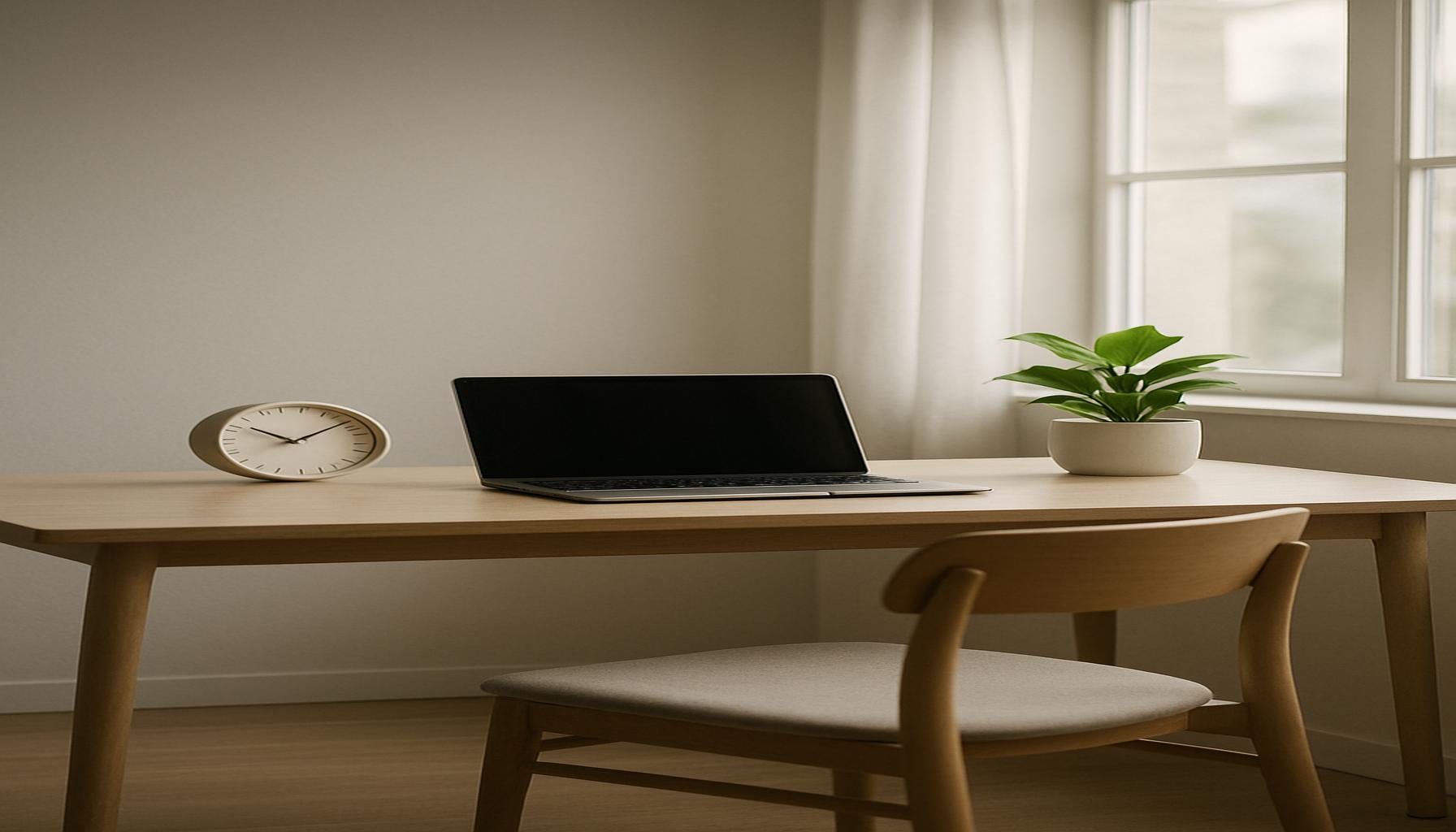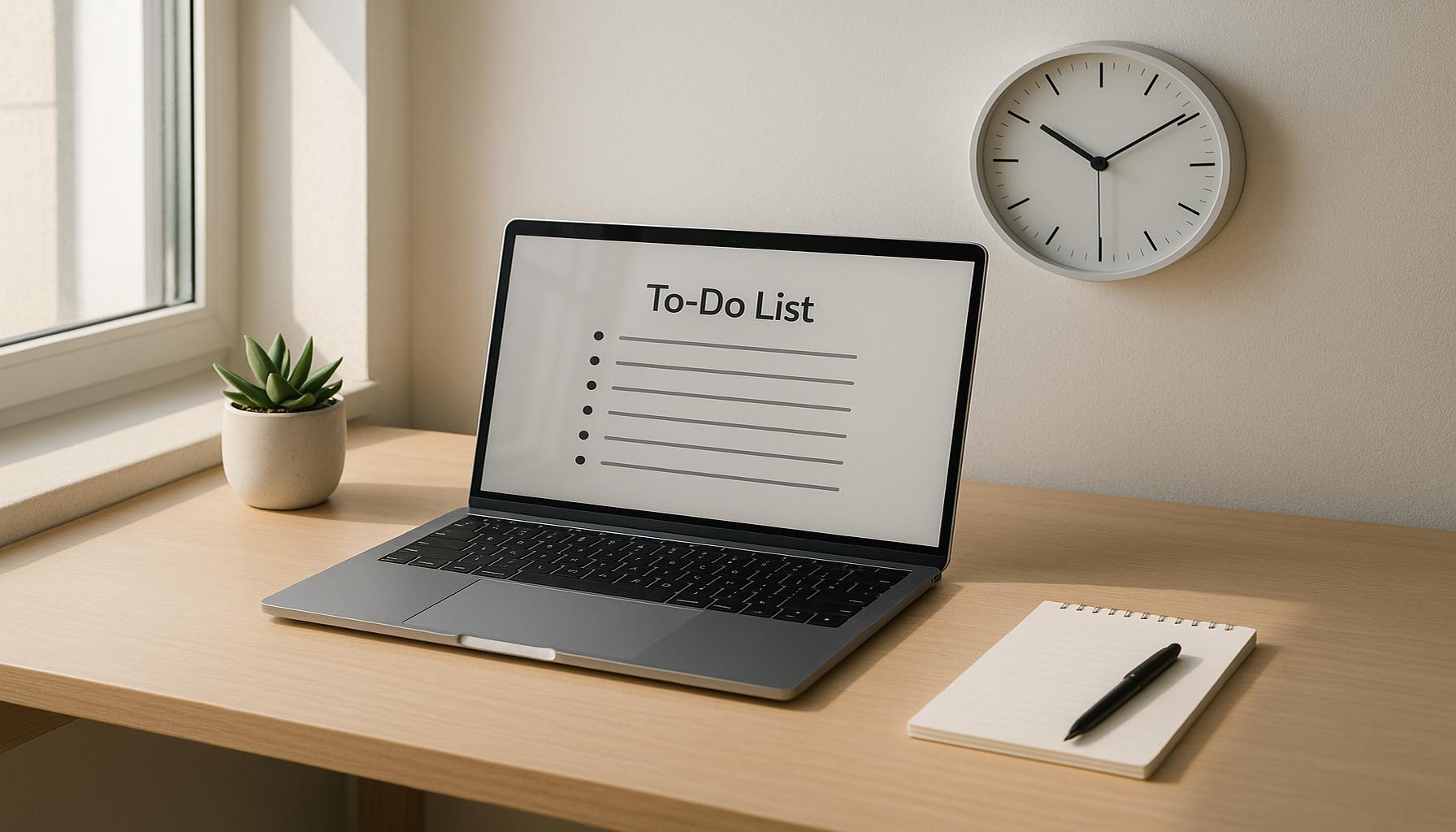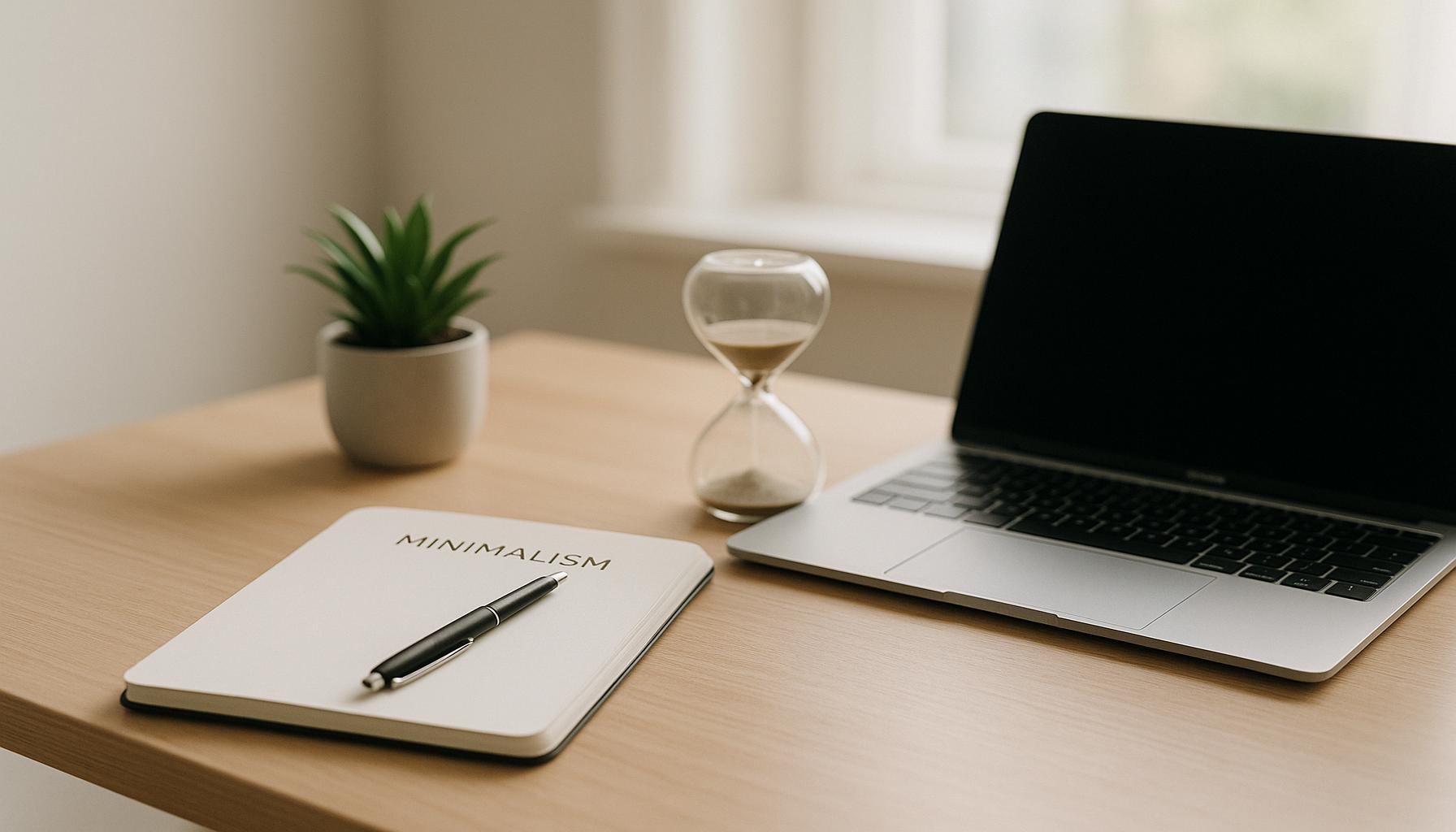Minimalism in Routine: Creating Habits that Boost Productivity and Mental Clarity

Embracing Simplicity for Enhanced Focus
In a society characterized by an incessant barrage of information and obligations, individuals often find themselves mentally stretched thin. The practice of minimalism, particularly in daily routines, offers a powerful strategy for reclaiming lost time and refreshing mental clarity. It allows individuals to focus on core priorities, potentially leading to staggering increases in productivity.
Key Benefits of Minimalism in Routine
- Reduced Stress: One of the most immediate advantages of adopting minimalism is a significant reduction in stress levels. By minimizing commitments, individuals can alleviate the pressure that comes with juggling too many tasks and responsibilities. For instance, opting to engage only in meaningful social activities and declining non-essential meetings can create a more balanced lifestyle.
- Enhanced Focus: Minimalism encourages the creation of a streamlined environment, which inherently minimizes distractions. For example, a clutter-free workspace can increase concentration and efficiency. Studies have shown that people who work in organized spaces experience heightened focus and satisfaction with their performance.
- Improved Energy: Simplifying decisions can conserve mental energy that would otherwise be spent on trivial matters. By reducing the number of daily choices—such as deciding what to wear or what to eat—individuals can channel their cognitive resources toward goals that truly matter to them, such as advancing in their careers or dedicating more time to personal interests.
Moreover, minimalism reaches beyond the physical realm. It involves decluttering not only personal spaces but also one’s mental landscape. By embracing minimalist practices, individuals can establish powerful daily habits that foster a sense of clarity and purpose, leading to greater satisfaction in both personal and professional spheres.
Elements of a Minimalist Routine
- Prioritization: Identifying essential tasks that align with personal goals is fundamental. This step involves evaluating obligations and determining which actions will contribute most significantly to one’s overarching objectives.
- Simplicity: Keeping a to-do list concise and manageable encourages individuals to focus on what truly needs to be accomplished rather than getting lost in a sea of tasks. A well-curated list, ideally limited to three to five items, can create a clearer path for a productive day.
- Consistency: Establishing daily rituals that promote productivity is crucial. This could be as simple as a morning coffee routine that sets a positive tone for the day or a winding-down practice that marks the transition from work to personal time.
By thoughtfully integrating these elements into daily life, individuals can cultivate routines that not only bolster productivity but also contribute to a lasting sense of mental clarity. Embracing minimalism can be the key to transforming one’s daily experience into a more focused and fulfilling journey, where every moment counts and priorities align with personal values.
DISCOVER MORE: Click here to enhance your focus
Essentials to Crafting a Minimalist Routine
To harness the power of minimalism in our daily routines, understanding its fundamental principles is essential. While minimalism often conjures images of sleek spaces and restricted possessions, its true essence lies in prioritizing quality over quantity. By intentionally crafting routines that emphasize simplicity and efficiency, individuals can significantly enhance their productivity while fostering a clearer mental state.

Understanding the Minimalist Mindset
The journey towards minimalism begins with adopting a mindset that values intentionality. This perspective encourages individuals to scrutinize their daily habits and commitments, identifying which actions contribute meaningfully to their lives. For example, before agreeing to take on a new project at work, consider whether it aligns with your professional goals. This approach not only preserves your time and energy but also cultivates a sense of purpose in every decision made.
Foundational Steps to Implement Minimalism in Your Routine
- Reflect and Evaluate: Taking time for introspection is crucial. Start by listing your daily tasks and obligations. Determine which ones bring joy and fulfillment and which drain your energy or distract you from your goals. This evaluation helps develop a baseline from which to refine your routine.
- Limit Distractions: Creating an environment conducive to focus is vital. Identify activities or environments that pull your attention away from essential tasks. For instance, consider designating specific times to check emails or social media, rather than allowing constant notifications to interrupt your workflow.
- Batch Similar Tasks: Grouping related tasks together can enhance efficiency. For example, allocate a set period each day for responding to emails rather than sporadically throughout the day. This minimizes the cognitive load and allows for deeper focus on more complex tasks during uninterrupted stretches of time.
- Schedule Downtime: Just as important as the tasks on your to-do list are the moments of rest and reflection. Incorporating breaks intentionally ensures you recharge and return to tasks with renewed energy. Practices such as mindfulness or simple stretching can significantly enhance mental clarity.
By implementing these foundational steps, the promise of minimalism in routine becomes evident. Every small adjustment can contribute to a more streamlined, productive day. Progress lies not only in accomplishing more but also in cultivating a clearer, more focused mindset that permeates all areas of life.
Ultimately, embracing minimalism isn’t merely about simplifying tasks; it’s about redefining how we interact with the world around us. As individuals refine their routines to prioritize what truly matters, they lay the groundwork for a more conscious, effective lifestyle that encourages both productivity and mental tranquility.
| Category | Advantages |
|---|---|
| Clarity in Goals | Minimalism helps in identifying essential goals, reducing overwhelm, and increasing focus. |
| Reduced Decision Fatigue | Fewer options mean quicker decisions, allowing for more energy to be spent on productive tasks. |
| Enhanced Productivity | A streamlined routine results in more efficient time management and prioritization of tasks. |
| Improved Mental Health | Clutter-free environments promote tranquility and minimize distractions, fostering clarity of thought. |
In today’s fast-paced world, embracing minimalism in our daily routines can unlock levels of productivity and mental clarity previously thought unattainable. By focusing on the core tasks and eliminating unnecessary distractions, individuals can align their actions with their goals more effortlessly. Moreover, as decision-making becomes streamlined, the energy that would be spent on choosing amongst too many options is redirected toward taking actionable steps.For those struggling with daily tasks, adopting a minimalist approach encourages breaking down complex activities into simpler, manageable steps. This not only enhances productivity but also cultivates a more positive mental state, making room for creativity and innovation. As one simplifies their routine, they may discover that less truly is more, allowing for deeper engagement in both personal and professional life. Psychological studies have shown that reduced clutter benefits cognitive function, leading to clearer thinking and better problem-solving capabilities. It may be time to consider minimalism not just as an aesthetic choice, but a practical lifestyle adjustment that can radically enhance daily performance and mental acuity.
DIVE DEEPER: Click here to simplify your online life
Streamlining Your Daily Tasks
Implementing minimalism in your routine does not stop at limiting distractions or batching tasks; it extends to how you approach and structure your day. A streamlined approach to daily activities can drastically improve productivity and mental clarity, allowing individuals to navigate their commitments with purpose.
The Power of Time Blocking
One of the most effective techniques for refining a minimalist routine is time blocking. This method involves dividing your day into dedicated blocks of time for specific activities. By doing so, you create a clear roadmap for your day, minimizing wasted moments and facilitating deeper focus on single tasks. Studies show that people who use time blocking experience up to 30% more productivity compared to their less organized counterparts. For example, you could reserve mornings for creative work when your mind is freshest, allocating afternoons for meetings and administrative duties.
Embrace the Two-Minute Rule
This simple yet powerful rule states that if a task takes less than two minutes to complete, do it immediately rather than putting it off. By tackling these quick tasks right away, you significantly reduce the mental clutter that comes from procrastination. Whether it’s responding to a quick email or organizing a stack of papers, adopting the two-minute rule can lead to a dramatic reduction in your task load, contributing to both clarity and efficiency.
Habit Stacking for Consistency
Another noteworthy approach to minimalism in routine is habit stacking. This involves linking a new habit to an existing one, thereby creating a seamless transition that promotes consistency. For instance, if you already make coffee every morning, consider integrating a short 5-minute meditation session right afterward. According to research, habit stacking can lead to increased adherence to new behaviors, as it leverages the established triggers of existing routines.
Utilizing Technology Mindfully
In today’s digital world, embracing minimalism in your routine also involves being intentional with technology usage. While productivity apps can offer valuable support, they can also become overwhelming if not managed properly. Focus on using a handful of reliable applications that empower you to streamline tasks. For instance, consider project management tools like Trello or Asana to organize projects without being buried in a multitude of apps. Setting limits on app usage can enhance your focus and promote a clear mental state, allowing you to engage with digital tools in a more purposeful manner.
Evaluating Your Commitments
Lastly, part of maintaining a minimalist routine is the ongoing evaluation of your commitments. Regularly ask yourself if each commitment still aligns with your goals and values. This practice of constant reevaluation can help you shed unnecessary obligations that eat into your time and energy. For instance, if you find that a weekly meeting is no longer yielding productive results, consider proposing an alternative communication method that may be more effective, such as a concise email update.
By consciously streamlining your daily tasks and adopting frameworks like time blocking, the two-minute rule, habit stacking, and mindful technology use, you not only enhance productivity but also cultivate a clearer mental landscape. The minimalism in routine nurtures a lifestyle where every decision is made with intentionality, leading to a more balanced and fulfilling daily experience.
DIVE DEEPER: Click here to discover the art of minimalism
Conclusion: Embracing Minimalism for a Rejuvenated Routine
In an age overflowing with distractions and overwhelming to-do lists, adopting minimalism in routine emerges as a promising solution to enhance productivity and foster mental clarity. By intentionally designing our daily activities and cultivating simple yet effective habits, we can reclaim our time and focus. The techniques discussed, such as time blocking, the two-minute rule, habit stacking, and mindful technology use, are not mere trends but rather powerful tools that can transform how we approach our day-to-day lives.
As we streamline our commitments and make conscious choices to simplify our routines, we empower ourselves to concentrate on what truly matters. The ongoing evaluation of our obligations enables us to align our actions with our values, ultimately leading to a more fulfilling and balanced lifestyle. With each small step towards minimalism, we reduce mental clutter, allowing for greater creativity and efficiency to flourish.
As you begin to implement these minimalist principles into your life, consider them not as rigid structures but as flexible frameworks that can adapt to your unique circumstances. The journey to a minimalist routine is deeply personal, requiring reflection and adjustment along the way. Begin today by adopting one or two of these strategies, and immerse yourself in the clarity and focus that follows. In doing so, you’ll not only boost your productivity but also cultivate a sense of well-being that resonates throughout all aspects of your life.


